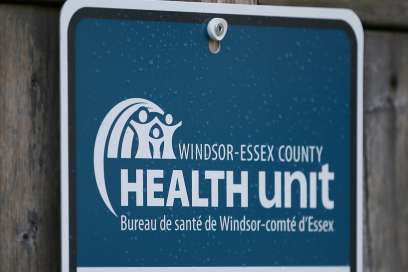Common Terns Becoming More Common On Belle Isle
Thursday January 20th, 2011, 12:37pm
Hello time traveller!!
This article is 5242 days old.
The information listed below is likely outdated and has been preserved for archival purposes.
The Detroit Zoological Society and the U.S. Fish and Wildlife Service have some good news to share. The common tern, a gull-like bird a bit bigger than a blue jay, is making a comeback on Detroit River shores. Last summer, researchers monitoring the northern tip of Belle Isle were happy to report being pecked upon by a particularly territorial example of the species.
“This feisty behavior was precisely what we were hoping to see because that means that the common terns had established an affinity for the site and were fiercely defending it as their breeding habitat,” explains Greg Norwood, a biologist with the Detroit River International Wildlife Refuge. Along with the current recovery of other native bird and fish species, the increase in common tern population on Belle Isle could indicate a rise in health for the border cities’ favourite straight.
Why is it important to track the number of common tern on Belle Isle? They’re known as an indicator species, letting us know the overall health of the Detroit River ecosystem. They thrive on small minnows that escape the mouths of bigger fish, and they feed by swooping along the water and plucking the fish out as the minnows try to escape their predators.
The common tern is considered threatened in the United States, meaning the species is likely to become endangered in the near future. In the early 1960s, more than 4500 nesting pairs could be found on various islands in the Detroit River. Now, only about 200 pairs remain, and they’ve chosen to nest on two Grosse Isle bridges. That represents a 96% decline in the last 50 years.
In an effort to draw more of the birds to Belle Isle, the Detroit Zoological Society (DZS), the U.S. Fish and Wildlife Service and the Detroit Water and Sewerage Department have dumped more than 9600 square feet of crushed limestone and cobble substrate on Belle Isle. They’ve also installed about 100 decoys, and a solar-powered sound system designed to attract nesting pairs of common tern to the location.
“The site is still ideal for common terns… because it is isolated from human disturbance and can be managed to keep predators out,” noted Tom Schneider of DZS. Tern experts have said up to 190 pairs of common terns can be accommodated at this location, and they hope to attract more through these methods, which have been successful in other areas on the Great Lakes.
“The Detroit River is now a centerpiece for common tern conservation in the entire Great Lakes, where effective public-private partnerships are working to bring this threatened species back,” said Dr. John Hartig, Manager of the Detroit River International Wildlife Refuge. “Common
tern restoration in the Detroit River would be an amazing accomplishment, and together with the lake sturgeon, lake whitefish, walleye, bald eagle, peregrine falcon, and osprey recovery underway, would represent one of the most dramatic ecological recovery stories in North America.”
























